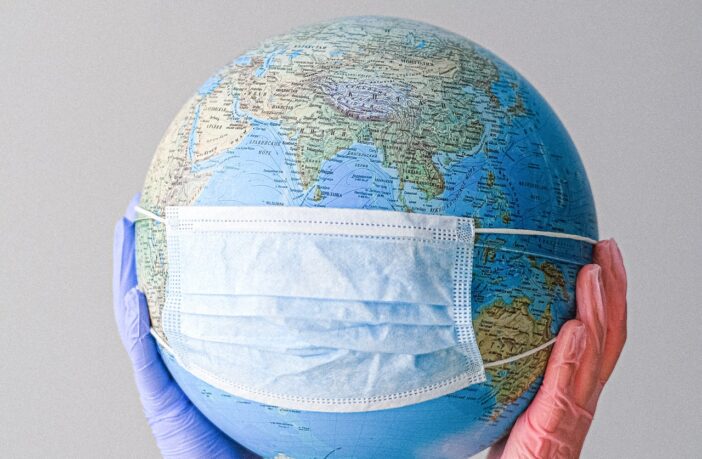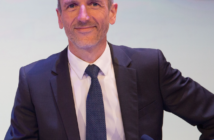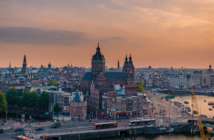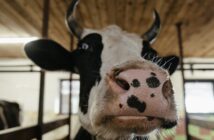Governments in the rich world prevented “total economic collapse” in 2020 by pumping $10 trillion dollars of stimulus into their economies, a staggering sum equal to about $10,000 per person. But in the world’s poorest countries, stimulus spending was just $17 a person.
This extraordinary imbalance, far greater than the preexisting income inequities between the developed and least developed worlds, is highlighted in a report on the World Economic Situation as we enter year two of the Coronavirus pandemic and the prospects going forward, which to summarize are worrisome.
The report by economists at the United Nations says the “massive and timely fiscal responses prevented a Great Depression-like economic catastrophe worldwide.”
But not only was this money distributed mostly to those who already had a lot, the report says, much of the stimulus ended up in the financial system bidding up the price of stocks, bonds and even bitcoin, thus doing little to address the real economy needs of the have-nots and creating new dangers.
“Against the backdrop of a raging pandemic, the world is witnessing the build-up of a massive financial bubble,” the report warns.
While the financial press in the rich world has been debating how investors should think about the risks to them of a possible financial bubble, the United Nations economists left no doubt they viewed this bubble as both an immediate risk “which may exacerbate financial instability” as well as a long term drag on the world economy and the United Nations’ Sustainable Development Goals.
“Acquisitions of financial assets clearly do not increase fixed investments, which are critical for creating jobs and boosting economic growth,” the report explained.
“As we mourn the growing death toll, we must remember that the choices we make now will determine our collective future,” The UN Secretary General, Antonio Guterres, said in releasing the 200-page report. “let’s invest in an inclusive and sustainable future.”
Shifting government spending from emergency stimulus to longer term investment was a key theme of the report. “As we step into a long recovery phase with the roll out of vaccines against Covid-19, we need to start boosting longer term-investments that chart a path toward a more resilient recovery,” said The UN’s chief economist and Assistant secretary general, Elliott Harris.
Most of the stimulus spending in 2020 was raised by borrowing, the report said, increasing public debt around the world by $9.9 trillion. “This is the largest increase in public debt since the second world war,” according to the report. “Governments around the world borrowed from the future to minimize the impact of the crisis on the current generation. The current generation therefore has the responsibility to make sure the borrowed money is well invested to ensure that the well being of the current generation does not come at the expense of the well being of future generations.”
While some developing countries are clearly having trouble managing and repaying their debt obligations, overall “the rise in public debt should not in itself be a concern as long as additional debt expands productive capacity and stimulates growth.”
In developing countries and even less prosperous communities in the developed world, such investments include infrastructure for internet and digital access, education and training to improve “human capital,” green technology, public health and climate mitigations.
The report chronicled the extraordinary economic carnage that accompanied the shock of the health crisis, which has so far killed two million people worldwide. After years of progress at reducing extreme poverty, the report estimated that 131 million were thrown into poverty by the pandemic and economic crash.
“As many as 797 million people will still be trapped in extreme poverty in 2030,” the report warned. That represents 9 percent of the global population.
“The cardinal Sustainable Development Goal of eradicating extreme poverty by 2030 (Goal 1.1) will likely be missed by a large margin. Poverty will remain pervasive in sub-Saharan Africa and many landlocked countries. Other SDGs will suffer collateral damage as a consequence of rising poverty.”
The macro economic numbers were chilling. The gross output of the global economy contracted 4.3 percent in 2020, far worse than the 1.7 percent decline of the Great Recession of 2009. The developed world was hit the hardest, with output falling 5.6 percent compared to the contraction of 2.5 percent in developing countries.
However, “the GDP estimates mask the severity of the employment crisis unleashed by the pandemic,” the report advised. Four out of five workers in the world, some 2.7 billion people, were affected by full or partial lockdowns. At its peak in April, the Global unemployment rate was 8.8 percent. Joblessness remains elevated in every developed country.
“The Covid-19 crisis has also wreaked havoc on the labor markets in the developing world,” the economists reported. They included these unemployment rates in key developing countries: Nigeria (27 percent); India (23 percent); Colombia (21 percent); Philippines (17 percent) and above 13 percent in Argentina, Brazil, Chile, Saudi Arabia and Turkey.
Women were disproportionately hurt by the economic crash as were workers in the so-called informal economy, who rarely had social benefits to fall back on.
The economists expressed concern that the developed world with its massive spending plans would more quickly return to pre-pandemic growth paths. “This may reverse or at least delay the long-term trend of convergence in the per capita incomes of the developed and developing countries, thwarting the objectives of reducing inequality between countries as envisaged in the 2030 agenda for Sustainable Development.”
The economists warned that while the large and timely stimulus “helped to prevent the worst, they did not mitigate the broader discontent that stems from the marginalization of the most vulnerable populations groups and the stark inequality that divides the haves and the have nots in society.”
For more insight into the Global Goals, and the world’s progress towards them check out the Global GoalsCast podcast
Report – Michael Oreskes
Photo by Anna Shvets from Pexels




